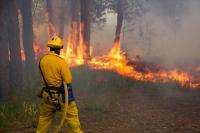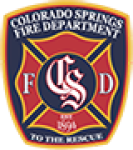Pick a section
Heavy Rescue

The Heavy Rescue crew is a highly trained and qualified team in all types of complex rescue techniques. Many of the team are FEMA (Federal Emergency Management Agency) certified for large disasters, nationally and locally, and participate in Colorado Task Force 1, the regional Urban Search and Rescue team. This unit is the department’s designated RIT (Rapid Intervention Team) which responds to all “working” fires to perform the most difficult rescues of other firefighters or civilians.
The Facts
- Trained in dive, ice, and swift water rescue, confined space and trench rescue, high angle, and auto extrication.
- Specialized Heavy Rescue Unit is equipped with state-of-the-art tools and equipment.
- Based out of Fire Station 17 on the City’s east side.
- Responds to all working fires, major traffic accidents and high angle rescues.
HazMat Unit
[[{"fid":"4766","view_mode":"medium_220px_","fields":{"format":"medium_220px_","field_file_image_alt_text[und][0][value]":"hazmat team suits","field_file_image_title_text[und][0][value]":"hazmat team suits"},"type":"media","field_deltas":{"1":{"format":"medium_220px_","field_file_image_alt_text[und][0][value]":"hazmat team suits","field_file_image_title_text[und][0][value]":"hazmat team suits"}},"attributes":{"alt":"hazmat team suits","title":"hazmat team suits","style":"width: 220px; height: 146px; float: right;","class":"media-element file-medium-220px-","data-delta":"1"}}]]
The Hazardous Materials (HazMat) Unit works in a cooperative effort with city, county, state, and federal
governments on environmental regulations and code compliance issues as well as response to and mitigation of hazardous materials spills/releases. The Colorado Springs Fire Department is the Designated Emergency Response Agency (DERA) for incidents occurring within the corporate limits of the city and has mutual aid response agreements with all surrounding fire departments and military installations.
The Facts
- The HazMat Team is comprised of 34 firefighters who are trained and certified to the “Technician Level” as defined in O.S.H.A. 29 CFR 1910.120.
- Responds to spills/releases of all types of hazardous materials to include radioactive shipments, such as transuranic waste traveling along the I-25 corridor, as part of the Waste Isolation Pilot Plant (WIPP) program.
- Main HazMat unit is based out of Fire Station 14.
- Back-up HazMat unit is based out of Fire Station 6.
- Decontamination HazMat unit is based out of Fire Station 20.
Wildfire Suppression

The Wildfire Suppression Program’s mission is to prevent and suppress wildland fire for the citizens and partners of Colorado Springs.
The City of Colorado Springs is an environmentally diverse city. It covers approximately 211 square miles and sits at an altitude of 6,035 feet above sea level.
The City lies in the foothills of the Rocky Mountains with many homes in the wildland urban interface (WUI) area. A wide range of topography and vegetation can be found from the steep slopes of the West Side to the rolling hills of the eastern neighborhoods.
Assets of the City include ownership of 44,000 acres within the Pikes Peak Watershed as well as other resources and utilities that lie within the National Forest.
The Colorado Springs Fire Department is dedicated to supporting a core set of values for each employee to follow and implement.
Important Links
• National Wildfire Coordinating Group - NWCG
• Geographic Area Coordination Center - GACC
• NOAA - Fire weather forecast
• National Interagency Fire Center - NIFC
• Wildland Firefighter Foundation
• WL Leadership Development
High Angle Rescue
[[{"fid":"4756","view_mode":"medium_220px_","fields":{"format":"medium_220px_","field_file_image_alt_text[und][0][value]":"High Angle Rescue","field_file_image_title_text[und][0][value]":"High Angle Rescue"},"type":"media","field_deltas":{"1":{"format":"medium_220px_","field_file_image_alt_text[und][0][value]":"High Angle Rescue","field_file_image_title_text[und][0][value]":"High Angle Rescue"}},"attributes":{"alt":"High Angle Rescue","title":"High Angle Rescue","style":"width: 200px; height: 133px; float: right;","class":"media-element file-medium-220px-","data-delta":"1"}}]]
High Angle Rescue became a reality in 1979 when the City annexed the Cheyenne Canyon area and it became necessary to provide safe and efficient evacuation of climbers in the Cheyenne Canon and Garden of the Gods areas. Due to the influx of technical and amateur climbers in the region and roll-over accidents in the Gold Camp Road area, the program was established with three goals: safety, efficiency, and standardization. The High Angle Team is the result of formalizing the services we were already providing to the citizens and visitors.
The Facts
- We respond to an average of 30 actual rescues per year.
- Fire Station 5 and 13 are the designated High Angle program stations.
- The Heavy Rescue unit is the back-up to the 2 High Angle Teams.
Tactical Emergency Medical Services (TEMS)
The primary mission of the TEMS Program is to provide medical support to law enforcement agencies during high risk emergencies. Four firefighters specially Tactical Emergency Medical Services trained to treat traumatic injuries respond in one of three medical squads. At emergency incidents, the four firefighters form two teams with two personnel (one firefighter/paramedic and one firefighter/EMT); one team is the entry team and the other team is the back-up team. The squads are state certified to transport as an ambulance if necessary, as they are equipped with a full complement of Advanced Life Support (ALS) equipment including medications, a cardiac monitor/defibrillator, and a cot.
TEMS:
- is composed of three medical squads that respond to medical emergencies and police department high risk operations, and also provides support at all major emergency incidents in the city.
- provides medical rehabilitation support to our firefighters during large incidents.
- has one specially designed support vehicle that can provide medical support for all high risk police and sheriff operation.
- includes specially-trained team members that are certified through programs that train paramedics and EMTs to treat injuries or extricate victims during law enforcement situations involving “hot zone” scenarios.

